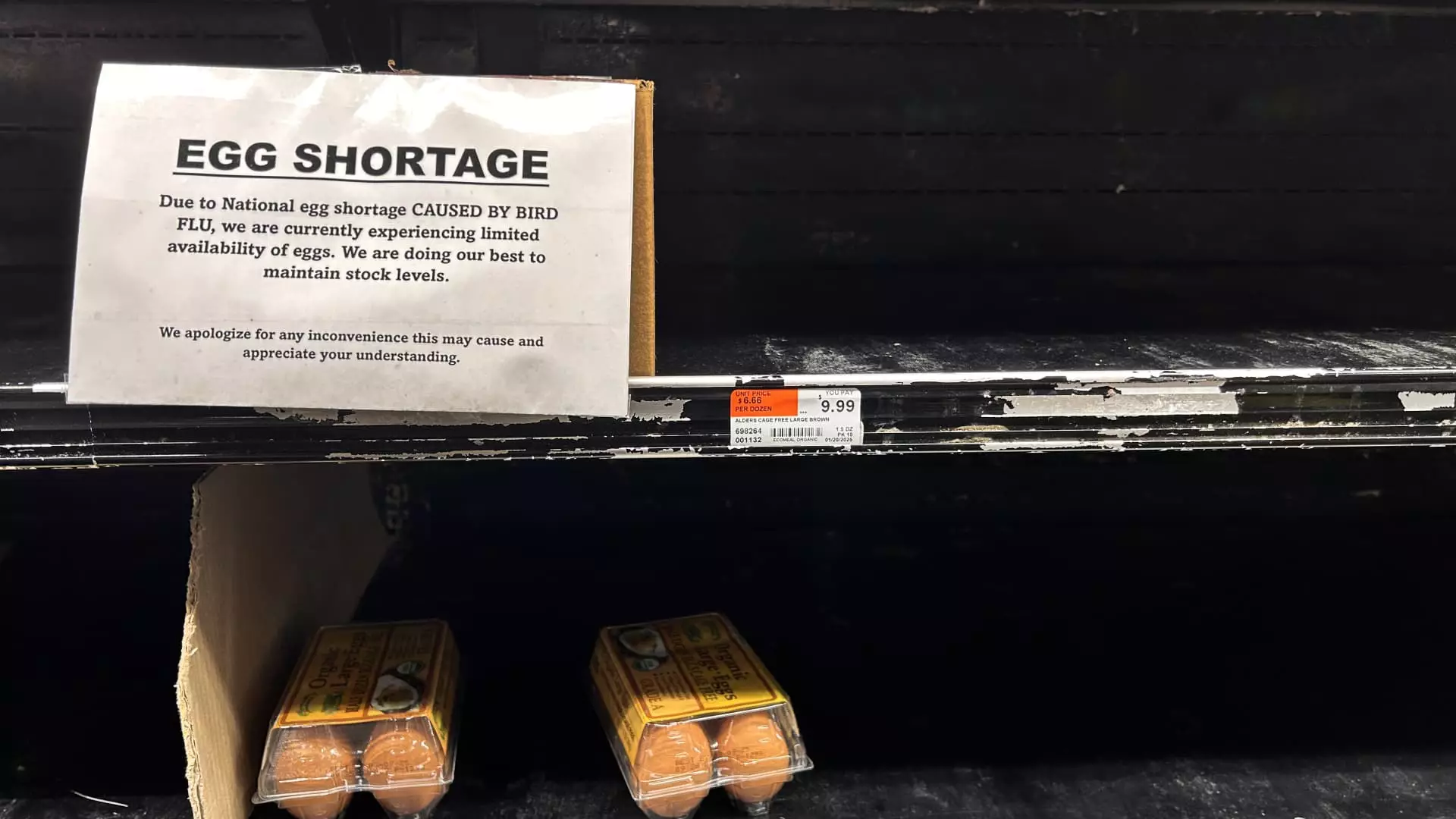The food industry is currently witnessing a shocking surge in wholesale egg prices that has left many consumers reeling. As of recent reports, average wholesale prices for large, white shell eggs soared to an astounding $8 per dozen—a significant leap from the previous record of $5.46 per dozen set in late December 2022. This price escalation can be primarily attributed to the ongoing bird flu outbreak, which has severely impacted chicken populations across the United States. With millions of chickens put down in an effort to control the spread of the disease, the egg supply has dwindled to alarming levels. As a result, daily grocery shopping may soon become a more expensive ordeal for many households.
The relationship between wholesale prices and the prices consumers see in stores is complex. There is typically a lag of several weeks before fluctuations in wholesale costs are reflected on grocery store shelves. According to market analysts, the ability of retailers to absorb these increased costs varies significantly among different chains. Larger retailers such as Walmart and Costco might be better positioned to manage such shifts. They often leverage stronger profit margins from other food products or can negotiate fixed-price contracts to stabilize their supply costs. In contrast, smaller, independent stores may feel compelled to raise their prices swiftly to maintain profitability as they lack the same economic buffer.
This disparity highlights a critical concern: the equitable access to basic food items may be jeopardized as smaller retailers struggle to cope with hyperinflation in egg prices. As demand continues to rise—especially around the winter holidays—small grocery shops might become less affordable options for consumers, effectively creating a two-tier market based on size and scale.
The Role of Avian Influenza
The primary driver of the rising egg prices is the highly pathogenic avian influenza (HPAI), commonly referred to as bird flu. This disease has been devastating to avian populations, especially among egg-laying chickens. The USDA reports that millions of chickens have perished, with over 22 million laying hens lost this year alone. Farmers are mandated to cull entire flocks upon detecting any infection, perpetuating an ongoing cycle of supply loss and price increase. Interestingly, while egg-laying hens are significantly affected, broiler chickens—those raised for meat—have experienced comparatively fewer casualties, highlighting a crucial distinction in avian farming.
As supply lines become strained, consumers are witnessing their retail prices rise sharply. Data from the Bureau of Labor Statistics indicates that while consumers paid about $4.15 for a dozen large, grade A eggs in December, this amount is still 65% higher than the previous year’s $2.51. In the context of overall U.S. inflation, which has somehow slowed, egg prices have defied this trend, provoking considerable anxiety among shoppers.
The ripple effects of these price increases are also being felt in the food service industry. Many restaurants, including popular chains like Waffle House, have responded by increasing their prices directly—charging an extra fee for egg dishes. This trend is not isolated; numerous local eateries are re-evaluating their menu pricing structures to accommodate the ballooning costs of ingredients. As consumers brace for higher tabs at restaurants, a pivotal question arises: how will this impact dining choices during peak seasons when egg-based dishes are in high demand?
The Future of Egg Prices
Looking ahead, experts warn that the situation may not improve soon. The consistent emergence and fallout of avian influenza continue to obscure any potential recovery for supply chains. Moreover, ongoing reports from the USDA indicate that the egg-laying population is still vulnerable, and as long as these health crises persist, consumer prices are unlikely to stabilize. With the average retail egg price having surged approximately 170% over the past few years, the stark contrast to the moderate increases seen in other meats suggests a uniquely precarious market environment.
The notable disparity in price shifts raises fundamental questions about how market forces, agricultural health, and consumer accessibility intertwine. As egg prices continue to rise, the industry and consumers alike must prepare for potentially prolonged challenges ahead, underscoring the fragility of food supply chains and the broader implications for everyday shoppers.
While inflation pressures ease across various sectors, the egg industry exemplifies an abnormal resilience in price volatility largely driven by the dire consequences of avian flu—a reality that will touch all consumers as they navigate their grocery budgets in the months to come.

